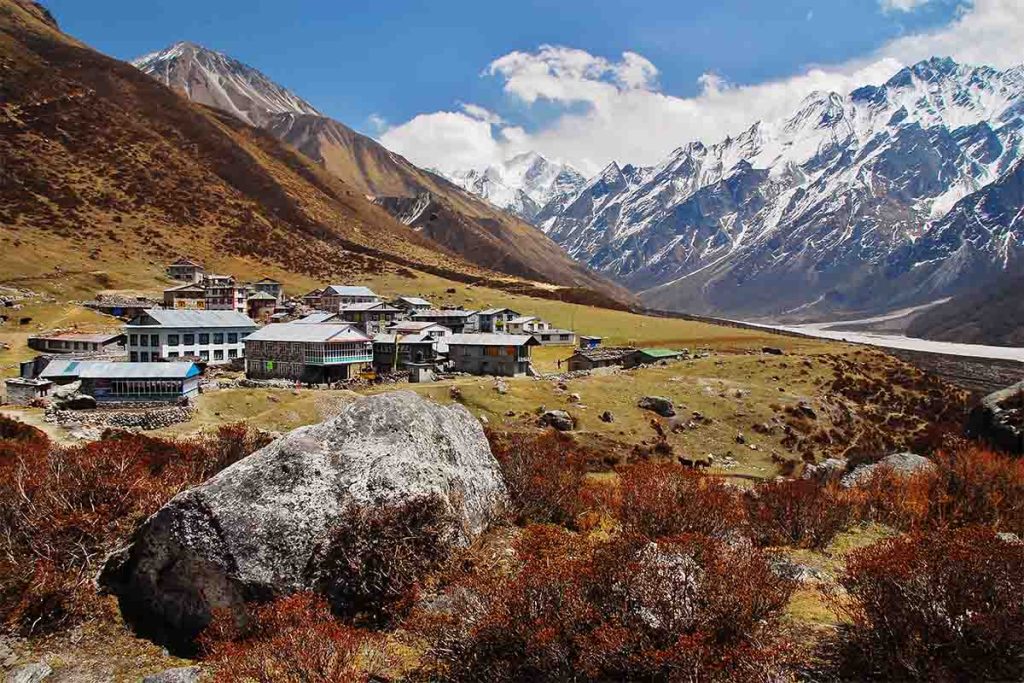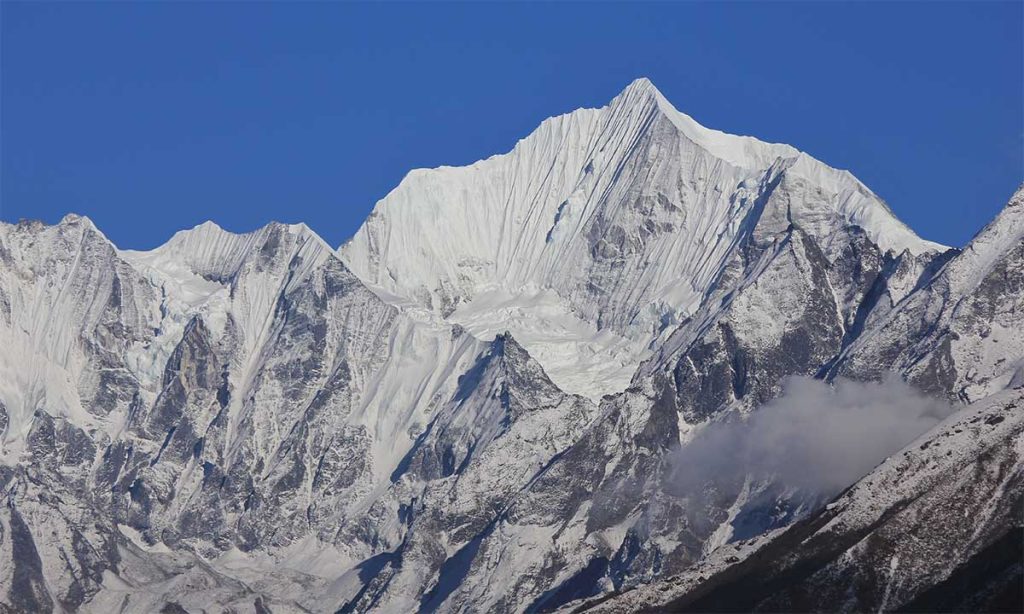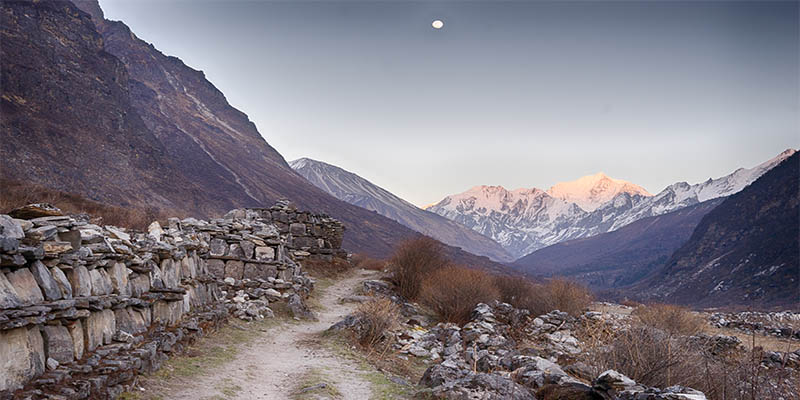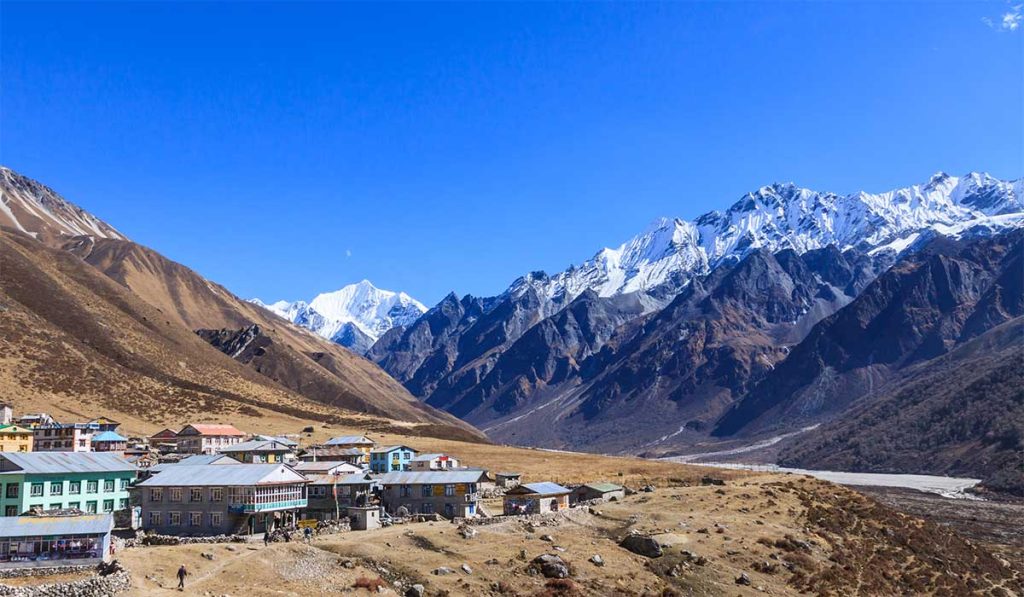
Langtang Valley Trek is an incredible journey in Nepal’s Himalayas. With its slowly growing popularity, it attracts thousands of trekkers every season. If you are reading this now, you might also be one of the next thousand trekkers of Langtang Valley. But before that, you need to understand how to prepare for Langtang Valley Trek.
Langtang Valley is located near Kathmandu, but it still seems remote. Trekkers find themselves surrounded by snow-covered mountains, dense forests, and attractive Tamang villages. The trails are well marked, but the elevation increases continuously. The trekking day can feel longer if you are not ready. So, in order to trek comfortably and safely, you must be ready for Langtang.
This Langtang Valley Trek guide will address all the necessary steps you need to take before the trip. You will learn to train your body slowly and continuously. In addition, from finding the best trekking gear for Langtang Valley to creating a proper packing list, you’ll be ready in every measure. Following these practical instructions will help you avoid most problems and fully experience the wonderful beauty of Langtang Valley.
Understanding the Langtang Trek Difficulty
Langtang Valley Trek difficulties are usually considered moderate. Most trekkers can complete it safely when they make advance preparations. The tour starts with Syabrubesi and gradually climbs through quiet forests, flowing rivers and small Tamang villages. The path is usually well marked, but the height increases continuously. You may feel exhausted in these steep climbs if you haven’t trained beforehand. On average, trekkers have to walk 5–7 hours per day, enjoying the peaceful landscape and gradually gaining altitude.
The highest points of the trip need to be reached slowly. These points are Kyanjin Ri at 4,773 m and Tserko Ri at 4,984 m. Most people can easily adjust to heights when they head up at a slow pace. Still, some trekkers may feel short of breath or dizzy if they move very quickly. This is why the right Langtang Valley Trek preparation is very important. Good physical shape, careful pace and continuous breaks help you enjoy the trip comfortably.

How Difficult is Langtang Valley Trek for Beginners?
For beginners, the trip can feel a bit challenging at times. In long and steep sections, pulling yourself up can be hard and exhausting. However, it is manageable if you prepare carefully. Slowly walking is the best solution for altitude sickness and relaxing frequently is the best for exhaustion. Besides, drinking a lot of water plays an important role in adapting to the altitude. If you are trekking for the first time and are likely to face exhaustion, start early in the morning to manage more breaks in between. Following Langtang Valley Trek tips will make the trek more enjoyable.
Is Langtang Trek More Difficult Than Annapurna or Everest Base Camp?
No, the Langtang Valley trek is not as difficult as Everest Base Camp and Annapurna Base Camp treks. Instead, it is easier and more beginner-friendly compared to those long treks. However, this trek is surely more difficult than a shorter trek like Poon Hill. This is mainly due to the higher altitude and greater daily distances to walk. But, once you carefully follow Langtang Valley Trek preparation tips, you can complete the trip without a problem even if it’s your first time.
Physical Preparation for Langtang Valley Trek
Proper physical preparation is very important for Langtang Valley Trek, although it is considered a medium trek. You will walk 5–7 hours daily, sometimes uphill and sometimes on uneven paths. Being physically trained helps you go more comfortably, move safely, reduce fatigue, avoid injury, and also adapt to the altitude more easily.
To succeed in trekking, you’ll require a combination of cardio, strength and endurance training. Exercises such as running, jogging, cycling and hiking strengthen your heart and lungs. This will make it easier to walk every day without getting tired. Training for the legs, core and shoulders helps you climb continuously and maintain balance on uneven paths. In addition, practicing with a backpack will prepare your muscles and joints gently for real trekking conditions.

Do You Need Altitude Training Before Langtang Trek?
Altitude training for Langtang Valley Trek is not strictly required. But it can help your body adapt more easily to high altitude. Your trip goes over 4,000 meters, so bear that in mind. There may not be adequate oxygen in such heights. Many first-timers can feel shortness of breath and even dizziness. So, it’s always better to get exposure to high altitude before your trip. Practice high-altitude hikes and train with guidance. You can even take some trekking sessions in your home country.
| Summary Table: Langtang Trek Physical Training | ||||
|---|---|---|---|---|
| Training Type– | Why You Need It | Description | Frequency / Duration | Tips |
| Cardio Exercises | Build stamina and lung capacity | Running, jogging, cycling, hiking | 4–5 times per week | Gradually increase intensity; practice carrying a backpack |
| Strength Training | Build leg, core, and shoulder strength for balance and uphill walking | Squats, lunges, planks, push-ups | 3–4 times per week | |
| Practice Hikes | Condition muscles and joints for longer trekking days | Short day hikes with backpack | 1–2 times per week | Walk slowly, focus on endurance; increase distance gradually |
| Altitude Preparation (Optional) | Help body adjust to thinner air | Short hikes at higher altitude | 1–2 times before trek | Ascend slowly, rest carefully, stay hydrated |
Mental Preparation for Langtang Valley Trek
Mental preparation plays a very important role in the success of Langtang Valley Trek. There are lots of unexpected challenges and even the trails can feel harder than expected. That’s why you must prepare your mind for unseen challenges ahead. When your thoughts are strong, you move naturally with more confidence and appreciate the beauty of the valley more deeply.
It is also necessary to stay motivated throughout the trip. An effective way to do this is by setting small daily goals and celebrating them every day as completion of a new milestone. Simple things like talking happily with other trekkers and sharing feelings can be important. Enjoy unique mountain scenes from each stop and take pictures. This uplifts the mood of your group.
Besides, having a positive mindset prior to trekking is quite important as well. Practice meditation and breathing exercises. They will develop patience in you. Visualizing yourself facing the Langtang Valley challenges is also a frequently used technique. By doing so, you’ll simulate the real trekking experience and prepare mentally for tough challenges. So, with the right mentality, even the most difficult climbing seems more manageable

Essential Packing List for Langtang Valley Trek
A proper Langtang Valley Trek packing list plays a crucial role in making your journey fruitful. It helps you be prepared for any unforeseen situations. However, the packing list for Langtang should be crafted with expertise and made as light as possible. It will make walking easier on the trail.
What Clothes Should You Pack for Langtang Valley Trek?
When you go to the Langtang Valley trek, dress in layers. This will help you adjust with the changing environmental temperatures.
| Layer Type | Examples of Clothing | Purpose |
| Base Layer | Thermal tops, quick-dry t-shirts | Keeps body dry by wicking sweat |
| Insulation Layer | Fleece or down jacket | Needed for warmth |
| Shell Layer | Waterproof jacket, windproof pants | Protects from rain and wind |
What Type of Trekking Boots Are Best for Langtang?
Trekking boots should be of a good quality because there is no repair shop or store during the trek. Here is an ideal footwear recommendation.
| Feature | Why It’s Important |
| Waterproof boots | Keeps feet dry in rain and snow |
| Ankle support | Protects from Sprain |
| Sturdy sole | Grips on Rocks |

Do You Need Trekking Poles for Langtang Valley?
Yes, trekking poles are recommended. This will help you with balance and support on rocky and uneven trails. If you are a beginner in trekking, trekking poles will make ascending a lot easier and less exhausting.
What Essential Trekking Gear Should Not Be Missed?
| Gears | Why You Need It |
| Backpack with rain cover | Keeps your belongings dry |
| Sleeping Bag (rated for -10°C) | For Cold nights |
| Headlamps | For early morning hikes |
| Water bottle + purification tablets | Helps in hydration |
| Sunglasses and Sunscreen | For protection against sun UV rays |
| First aid kit | Helps with minor injuries |
Security and Health Guidelines for Langtang Valley Trek
It is very important to ensure your safety and health during the Langtang Valley Trek. The trek passes through high-altitude areas where sudden weather changes, cold temperatures, and physical exertion can affect your body. Proper preparation helps you avoid accidents and handle minor injuries.
Altitude sickness, also known as Acute Mountain Sickness (AMS), is one of the most important risks on high-altitude treks. This can occur when you climb above 3,000–4,000 meters too quickly. Those who get caught by altitude sickness may feel headaches, dizziness, nausea, and fatigue, and even become unconscious due to shortness of breath. It is a matter of serious concern rather than something to ignore. AMS can develop into High-Altitude Pulmonary Edema (HAPE) or High-Altitude Cerebral Edema (HACE) if it is not treated in time. And this can be life-threatening.
To prevent AMS, you must climb slowly and walk steadily. Many skip the rest stops, and many have to due to a late start. This will increase the risk. So, you are suggested to take regular breaks. Avoid alcohol and heavy foods at high altitude, but drink plenty of water. Medications such as Diamox are a must to carry if your doctor has prescribed them.
It is necessary to carry a well-prepared first aid kit. This is important to cure some minor injuries on the trek. Here are some of the suggestions to bring in the first aid box.
- Painkillers
- Bandages
- Antiseptic wipes
- Blister treatment
- Cold and flu medicine
- Rehydration salts
- Thermometer.
- Altitude pills (if required)
- Personal Medications
Travel insurance covering emergency helicopter evacuation is highly recommended. This will help you in case of serious illness or injury. Emergency options like Langtang region helicopter rescue are possible without additional expenses when you have a proper travel insurance.

Additional Important Things to Know
Are Permits Required for the Langtang Valley Trek?
Yes. It is very important to carry appropriate Langtang Trek permits and documents before starting the trek. Trekking here requires the Langtang National Park permit. This permit allows trekkers to enter the protected area and also supports local protective efforts. Having this permit with you ensures that your trip is officially recognized and safe. You can easily get the Langtang National Park permit in Kathmandu at the Nepal Tourism Board or at the entrance post in Dhunche (Rasuwa). However, today, it’s not your responsibility, as the trekking agencies handle it for you.
The cost of the Langtang National Park permit is NPR 1,500 for SAARC nationals and NPR 3,000 for other international trekkers. If you visit with children under age 10, they generally do not require permits and can enter for free.
What is the Best Time for Langtang Valley Trek?
The best time to trek Langtang Valley is undoubtedly the spring and autumn. Like in most of the treks in Nepal, these seasons provide excellent trekking conditions and visibility. And this provides visitors with stunning Himalaya scenery.
The spring season starts in March and lasts till May. Soon after it starts, the weather gradually becomes warm and the sky becomes clear. Blooming rhododendron flowers become the most notable and enjoyable highlights. Trails are usually safe and mostly smooth. This makes it easier to walk continuously. Moreover, the Spring climate provides good visibility of snow-covered peaks and comfortable daily temperatures. But in early spring, the mornings and nights can still be cold as winter has just passed.
September marks the start of autumn. Autumn is considered the best time for trekking in Nepal. The environment at this time is fresh and clean after the monsoon rain. The weather is also stable. That’s why trekkers can enjoy the wonderful panoramic views of Langtang Lirung, Ganesh Himal, and other peaks. The trails are in excellent condition, and the scenes make them ideal for photography.
November marks the end of this season. Till this time, Nepal celebrates Hindu’s biggest festivals, Dashain and Tihar, which make this time culturally rich as well.
Can You Trek Langtang Valley in Winter or Monsoon?
December to February is the time when coldness reaches at peak in Himalayas. So, surely trekking in winter would be difficult. When you are at a high altitude, some trails may be covered with snow, and snow can make routes slippery. So it is very important to prepare accordingly with warm clothing and proper gear.
The monsoon season stretches from June to August and is generally not recommended for trekking. This is because of the heavy rainfall in the path. This makes the trails slippery and presents tricky situations. Additionally, the risk of landslides is increased. No one knows when the visibility of the mountains could get blocked by humidity. And this may be the same for days.
Hence, in short, for all these stated reasons, Langtang Valley trek in monsoon and winter is usually avoided by beginners and only tried by experts.

Langtang Valley Trek Preparation—Conclusion
Langtang Valley Trek is actually a memorable Himalaya adventure. Trekkers are offered fantastic mountain scenes and attractive villages with a peaceful atmosphere on the trek. Every year, trekkers from all over the world visit this natural wonder. However, it still presents quiet and remote experience.
When you know how to prepare for Langtang Valley trek, you can enjoy the journey safely and comfortably. Getting physical training and mental preparedness in advance will help you a lot. Finally, after following our safety tips and expert packing list, you can ensure a remarkable journey in the Himalayas.
Hence, no matter you are a beginner or an experienced trekker, you can enjoy every moment and return home with unforgettable memories if you understand Langtang Valley Trek challenges and prepare accordingly.

